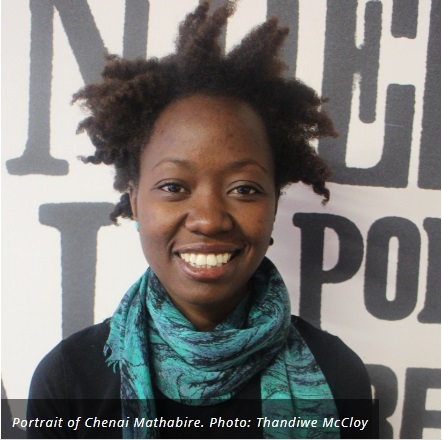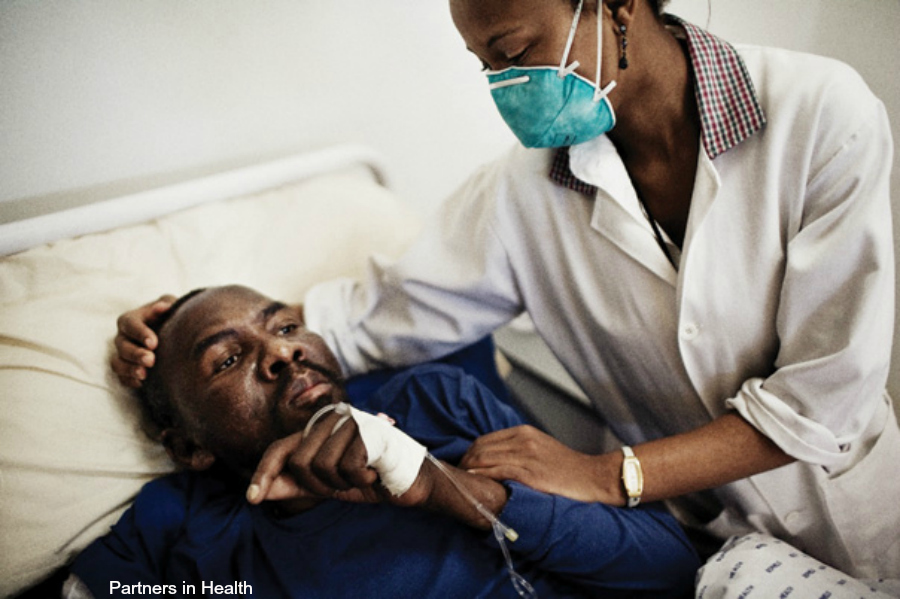The Nurse Wins HIV-TB prize for life-saving TB test research.
The test uses the HIV patient’s urine to detect LAM (Lipoarabinomanan), a protein created when TB bacteria cells break down. The lower the patients’ immunity, which is measured by numbers of CD4 T-cells, the more LAM appears in the urine and the more sensitive the test becomes. This is why the test is recommended for use in patients with CD4 cells below 100. The MSF study found the test was well accepted by staff, easy to use, and led to better, faster results than sputum or X-ray tests. Nearly 99% of TB LAM test patients received a timely result, versus 70% with sputum and 35% with X-rays.
By TZ Business News Staff and Agencies.
A Zimbabwean nurse working in Malawi has discovers an easier, faster method to test for the tuberculosis in HIV infected persons, the organization Doctors Without Frontiers–also called Medecins Sans Frontieres (MSF)– has reported in a Press Statement.
The Zimbabwean Doctors Without Borders (MSF) nurse and researcher Chenai Mathabire has won an HIV/TB Research Prize at the 2017 International Aids Society Conference on HIV Science in recognition of her achievement, a press release circulated through APO has said.
Through a study conducted in Malawi and Mozambique, Chenai has provided strong evidence that an easy-to-use point-of-care TB LAM test, which quickly diagnoses tuberculosis (TB) in severely ill HIV patients, is feasible to use in real-life clinics with high numbers of HIV-TB patients.
TB is the biggest killer of people living with advanced HIV, with over 400,000 patients dying each year from the disease. People with advanced HIV, also known as Acquired Immune Deficiency Syndrome (AIDS) have very weakened immune systems, leaving them susceptible to common infections, which can quickly become deadly.
Successfully treating ill AIDS patients involves rapidly assessing the strength of their immune systems and putting them on the right treatment straight away, whether they have TB or another disease deadly to HIV patients, cryptococcal meningitis.
However, in poorer countries, limited laboratory and X-ray facilities, and the time spent waiting on results can mean long and often deadly delays for sick patients arriving at clinics or hospitals. At the same time, people with late-stage HIV often can’t produce enough sputum for more common TB sputum tests so common tests such as sputum microscopy cannot be done. X-rays are also less useful to detect TB in people with advanced HIV.
At $3 per test, the TB LAM test offers a quick, simple and cost-effective alternative that gives on-the-spot results in 30 minutes. Yet despite being available since 2010, only 140,000 TB LAM tests are used each year.
“In Malawi, some HIV patients with suspected TB were waiting months for laboratory or X-ray results to come back. Clinicians don’t like to start patients on treatment based only on clinical signs and symptoms, they prefer to have a diagnostic test result,” says Chenai, who was responsible for implementing and supervising the study. “The TB LAM test helped them make that decision, and they felt better about starting HIV patients on TB treatment. It doesn’t replace existing tests, but adding this test helps us identify more TB cases and can improve the patients’ chances of survival.”
The test uses the HIV patient’s urine to detect LAM (Lipoarabinomanan), a protein created when TB bacteria cells break down. The lower the patients’ immunity, which is measured by numbers of CD4 T-cells, the more LAM appears in the urine and the more sensitive the test becomes. This is why the test is recommended for use in patients with CD4 cells below 100. The MSF study found the test was well accepted by staff, easy to use, and led to better, faster results than sputum or X-ray tests. Nearly 99% of TB LAM test patients received a timely result, versus 70% with sputum and 35% with X-rays.
Currently the main barrier to wider use of the TB LAM test by national governments is that it isn’t included in country guidelines and national TB programmes are not actively pushing it. Use of the TB LAM test has been recommended by the new WHO guidelines for advanced HIV for use in severely ill patients in hospitals but not yet in primary care, given the test’s decreased accuracy in patients with stronger immune responses.
MSF will use the study to advocate for health ministries in countries with high HIV TB burdens to use the TB LAM test in primary care and hospital centres, as well as include TB LAM within a diagnostic package for patients with advanced HIV. This would include point-of-care tests for CD4 (to allow rapid bed-side assessment of immune strength), cryptococcal meningitis and TB to help quick diagnosis and, most importantly, improve patients’ chances of survival.
MSF currently uses TB LAM as part of a diagnostic package in HIV projects in Democratic Republic of Congo (DRC), Guinea, Kenya, Malawi, Mozambique, Niger, Uganda and Zimbabwe. MSF currently supports over 230,000 people living with HIV on antiretrovirals in 19 countries, with a focus on free quality care, and provides free hospital-based care for people living with advanced HIV in DRC, Kenya Guinea, and Malawi.
In an earlier report published by MSF on their website, Chenai Mathabire describes herself as a committed medical worker through the following words: “I put my all into every assignment I go on, no matter where it is.”
Chenai Mathabire, 34, works as an epidemiologist in an MSF-run HIV/AIDS and TB project in Chiradzulu, Malawi. For the last nine months, her job as an operational research epidemiologist involved conducting TB screening tests and observing the effects of long-term ARV use on the emergence of non-communicable diseases in HIV patients.
A nurse and epidemiologist, Chenai expanded her skills during numerous MSF assignments. She first worked with MSF in her home country, Zimbabwe, in 2011 as a nutrition coordinator and nurse and counsellor working with survivors of gender-based violence in Murambinda. She then progressed to being an MSF clinic manager in Harare. Her first international assignment with MSF was to Uzbekistan where she developed and implemented a patient support system for HIV-positive patients.
Soon afterwards, she headed to Bo in Sierra Leone, to implement and improve an ambulance system, to help save the lives of children and pregnant women facing emergencies. This intervention, which included training nurses to manage patients inside ambulances, substantially reduced maternal mortality rates. Her work extended to supervising community volunteers engaged in malaria testing and treatment and running a primary healthcare clinic.
Passionate about promoting healthcare among vulnerable populations, Chenai spent her next two MSF assignments in South Sudan. First she treated people wounded in heavy conflict and then was involved in training and managing nurses in a primary healthcare centre inside a refugee camp.
What work were you doing in Malawi?
I conducted operational research involving TB screening tests where we determined whether or not a patient had TB using urine samples. I also carried out a cohort study to observe the effects of long-term ARV use over a 10 year period to look out for the emergence of non-communicable diseases in the group.
What did you like about working there?
I enjoyed working in Malawi because it’s similar to my home country, Zimbabwe. It was like working at home; the food is the same, the climate is pleasant and it’s safe. Malawians are also really friendly, open people.
Describe a typical day in the Chiradzulu project
Work started at 7.30am and I would help the team prepare for their tasks such as collecting items from the pharmacy and checking that we had appropriate equipment for examinations, among other activities. I then observed the team’s overall performance, including whether they were respecting research protocols and their interaction with the patients. On some days, I checked whether we were meeting targets and how to overcome challenges.
What keeps you working for MSF?
I love how MSF brings healthcare to vulnerable people in remote areas. I also appreciate how the different departments within MSF come together to help people on the ground.
I also enjoy having the chance to provide suggestions on how work should be done, being able to communicate with anyone, no matter their position and the high levels of transparency and accountability within the organisation.
What have you learnt through your assignments with MSF?
I’ve learnt to appreciate what I have. For the first two weeks of my initial assignment in South Sudan, we had no fruit or vegetables as the ground was too muddy for the plane with supplies to land. I became grateful for the food I was eating after seeing that the people around me survived on wild fruit and some small fish caught in the river.
Which personal attributes have helped you carry out your work with the organisation?
I put my all into every assignment I go on, no matter where it is. If I have an objective on an assignment, I work hard to achieve it. If I can’t, I need to understand proper reasons why I didn’t succeed. I don’t give up easily. This attitude has helped me achieve my goals at MSF and I’m motivated by people appreciating my work. It’s important to feel that I’m making a difference.
What are your future plans?
I’ll soon return to Malawi for a few weeks to analyse data on the TB and ageing cohort studies we are undertaking and then write reports on what I find. Read here more of MSF’s activities in Malawi.






